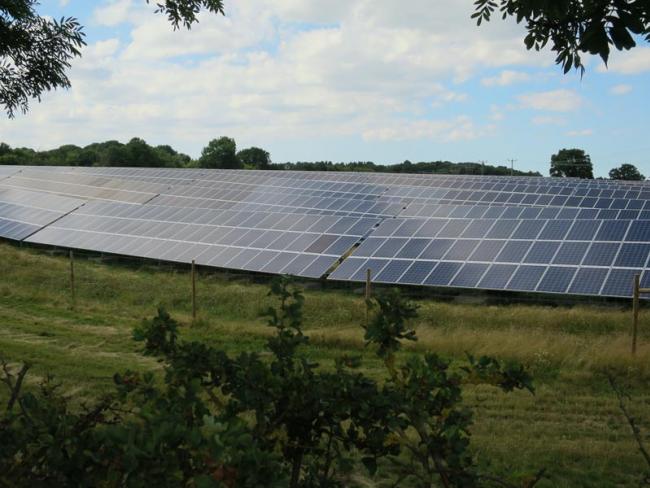
Solar panels near Wroxham, Norfolk. Solar farms can take farmland out of production for decades. Photo Hugh Venables/geograph.org.uk (CC BY-SA 2.0).
Under the environmental land management schemes of the previous government, still in force and applicable in England, farmers are paid to adopt sustainable farming practices to take land out of food production.
These schemes pay farmers to let land lie fallow – like the infamous EU set-aside – or to boost wildlife. They add to the encouragements for farmers to move out of food production.
These incentives have the result of driving farming families out of the industry. Generations of skill and experience are lost. More productive land is acquired by hobby and weekend farmers and capitalists. They acquire farmland to widen the spread of risk on investment portfolios, to avoid capital gains tax, or to cash in on carbon offset and biodiversity incentives.
Land lost to solar and property developers constitutes another blow to our food security. Within days of the 2024 election the government approved three new solar farms, including Mallard Pass on the Rutland-Lincolnshire border, over four miles from end to end of prime agricultural land in one of Britain’s most productive farming areas. Increasingly that means pressure to use farmland for solar farms, which is counted as part of “total income from farming”.
Lease periods for solar farms are increasing too – commonly 40 years or more – taking farmland out of food production for decades. In July 2023 CPRE, the countryside charity, reported that “…14,500 hectares of such land, which could grow at least 250,000 tonnes of vegetables a year based on typical yields, has been permanently lost to development every year since 2010. Enough to feed the combined populations of Liverpool, Sheffield and Manchester their five a day.”
• Related article: Without food, there’s no health or security
• Related article: Food for the people
